
About this story: This preview of Project Censored’s annual censored-story list was produced by Random Lengths News. The CN&R has a long history of co-publishing this project and is proud to return to this year-end tradition. The Project Censored book, State of the Free Press 2024—featuring coverage of 25 stories that mainstream media has neglected this past year—was released Dec. 5 and can be purchased via projectcensored.org.
Story by Paul Rosenberg, for Random Lengths News
Illustrations by Anson Stevens-Bollen
We have made the planet inhospitable to human life.”
That’s what the lead researcher in Project Censored’s number one story this year said. He wasn’t talking about the climate catastrophe. He was talking about so-called “forever chemicals,” per- and poly-fluoroalkyl substances (PFAS), linked to prostate, kidney and testicular cancer and additional health risks, and the study he led found unsafe levels in rainwater worldwide.
Even though this story received some corporate media attention—in USA Today and on the Discovery Channel—the starkly shocking bottom line clearly didn’t come through to the general public. Have you heard it before? Has it been the subject of any conversation you’ve had? No? Well, that, my friend, is the very essence of what Project Censored’s signature “top ten” list is all about: exposing the suppression (active or passive) of vitally important information, which renders the public unable to act in the way that a healthy democratic populace is supposed to. The project has been doing this since Carl Jensen began it with a single college class in 1976, inspired in part by the way the Watergate story got this same sort of treatment until well after the election cycle it was part of.
But there’s a second story intertwined with the “forever chemicals” pervasive presence: the revelation that companies responsible for them have known about their dangers for decades, but kept those dangers hidden—just like fossil fuel companies and climate catastrophe. The intersection of environmental/public health and corporate criminality is typical of how certain long-standing patterns of censored news weave together across the years, even decades, and how the spotlight Project Censored shines on them helps to make sense of much more than the individual stories it highlights, as vitally important as they are in themselves.
In previous years, I’ve highlighted the multiplicity of patterns of censorship that can be seen. In their introduction to the larger 25-story list in their annual book, The State of the Free Press, Andy Lee Roth and Steve Macek describe these patterns at two levels. First, invoking the metaphor that “exemplary reporting is praised for shining light on a subject or bringing to light crucial facts and original perspectives,” they say.
The news reports featured in this chapter are rays of light shining through a heavily slatted window. Each of these independent reports highlights a social issue that has otherwise been dimly lit or altogether obscured by corporate news outlets. The shading slats are built from the corporate media’s concentrated ownership, reliance on advertising, relationship to political power, and narrow definitions of who and what count as “newsworthy.” Censorship, whether overt or subtle, establishes the angle of the slats, admitting more or less light from outside.
But in addition, the authors say, it’s important to see the “list as the latest installment in an ongoing effort to identify systemic gaps in so-called mainstream (i.e., corporate) news coverage.” They go on to say, “Examining public issues that independent journalists and outlets have reported but which fall outside the scope of corporate news coverage makes it possible to document in specific detail how corporate news media leave the public in the dark by marginalizing or blockading crucial issues, limiting political debate, and promoting corporate views and interests.”
On the one hand, all that is as true as it’s ever been. But on the other hand, the two themes in the number one story—environmental harm and corporate abuse—so dominate the top-ten list that they send another message as well, a message about the fundamental mismatch between our needs as a species living on a finite planet and a rapacious economic system conceived in ignorance of that fact. The climate catastrophe is just the most extreme symptom of this mismatch—but it’s far from the only one. Corporate abuse figures into every story in the list—though sometimes deep in the background, as with the decades-long efforts to destroy unions in story number six. Environmental harms show up in seven of the 10 stories.
There are still other patterns here, to be sure—and I encourage you to look for them yourself because seeing those patterns enriches your understanding of the world as it is, and as it’s being hidden from you. But this dominant pattern touches us all. The evidence is right there, in the stories themselves.

“Forever chemicals” in rainwater a global threat to human health
Rainwater is “no longer safe to drink anywhere on Earth,” Morgan McFall-Johnsen reported in Insider in August 2022, summing up the results of a global study of so-called “forever chemicals,” polyfluoroalkyl substances (PFAS), published in the journal Environmental Science & Technology. Researchers from Stockholm University and the Institute of Biogeochemistry and Pollutant Dynamics at ETH Zurich concluded that “in many areas inhabited by humans,” PFAS contamination levels in rainwater, surface water and soil “often greatly exceed” the strictest international guidelines for acceptable levels of perfluoroalkyl acids.
They’re called “forever chemicals” because they take so long to break down, “allowing them to build up in people, animals, and environments,” Insider reported. Project Censored notes, “Prior research has linked these chemicals to prostate, kidney, and testicular cancer and additional health risks, including developmental delays in children, decreased fertility in women and men, reduced vaccine efficacy, and high cholesterol.”
“PFAS were now ‘so persistent’ and ubiquitous that they will never disappear from the planet,” Lead researcher Ian Cousins told Agence France-Presse. “We have made the planet inhospitable to human life by irreversibly contaminating it now so that nothing is clean anymore. And to the point that it’s not clean enough to be safe,” he said, adding that “We have crossed a planetary boundary,” a paradigm for evaluating Earth’s capacity to absorb harmful impacts of human activity.

The “good news” is that PFAS levels aren’t increasing in the environment. “What’s changed is the guidelines,” he said. “They’ve gone down millions of times since the early 2000s, because we’ve learned more about the toxicity of these substances.”
All the more reason the second strand of this story is important: “The same month,” Project Censored writes, “researchers at the University of California, San Francisco, published a study in the Annals of Global Health using internal industry documents to show that the companies responsible for ‘forever chemicals’ have known for decades that these substances pose significant threats to human health and the environment.”
There’s been limited corporate media coverage (only from USA Today, the Discovery Channel and Medical News Today) on the fact that rainwater isn’t safe to drink, but the general public clearly hasn’t heard the news. However, there’s been more coverage of the series of lawsuits developing in response to PFAS. But the big-picture story surrounding them remains shockingly missing.

Hiring of former CIA employees and ex-Israeli agents “blurs line” between Big Tech and
Big Brother
“Google—one of the largest and most influential organizations in the modern world—is filled with ex-CIA agents,” Alan MacLeod reported for MintPress News in July 2022. “An inordinate number of these recruits work in highly politically sensitive fields, wielding considerable control over how its products work and what the world sees on its screens and in its search results.”
“Chief amongst these is the trust and safety department, whose staff, in the words of the Google trust and safety vice president Kristie Canegallo, ‘[d]ecide what content is allowed on our platform’—in other words, setting the rules of the internet, determining what billions see and what they do not see.”

And more broadly, “a former CIA employee is working in almost every department at Google,” Project Censored noted.
But Google isn’t alone. Nor is the CIA. “Former employees of US and Israeli intelligence agencies now hold senior positions at Google, Meta, Microsoft, and other tech giants,” Project Censored wrote. A second report focused on employees from Israel’s Unit 8200, that country’s equivalent of the CIA, which is “infamous for surveilling the indigenous Palestinian population,” MacLeod wrote. Using LinkedIn, he identified hundreds of such individuals from both agencies, providing specific information about dozens of them.
“The problem with former CIA agents becoming the arbiters of what is true and what is false and what should be promoted and what should be deleted is that they cut their teeth at a notorious organization whose job it was to inject lies and false information into the public discourse to further the goals of the national security state,” MacLeod wrote, citing the 1983 testimony of former CIA task force head John Stockwell, author of In Search of Enemies, in which he described the dissemination of propaganda as a “major function” of the agency.
“I had propagandists all over the world,” Stockwell wrote, adding:
“We pumped dozens of stories [to the media] about Cuban atrocities, Cuban rapists. … We ran [faked] photographs that made almost every newspaper in the country. … We didn’t know of one single atrocity committed by the Cubans. It was pure, raw, false propaganda to create an illusion of communists eating babies for breakfast.”
“None of this means that all or even any of the individuals are moles—or even anything but model employees today,” MacLeod noted later. But the sheer number of them “certainly causes concern.”
Reinforcing that concern is big tech’s history. “As journalist Nafeez Ahmed’s investigation found, the CIA and the NSA were bankrolling Stanford Ph.D. student Sergey Brin’s research—work that would later produce Google,” MacLeod wrote. “Not only that but, in Ahmed’s words, ‘senior U.S. intelligence representatives, including a CIA official, oversaw the evolution of Google in this pre-launch phase, all the way until the company was ready to be officially founded.’”
This fits neatly within the larger framework of Silicon Valley’s origin as a supplier of defense department technology.
“A May 2022 review found no major newspaper coverage of Big Tech companies hiring former US or Israeli intelligence officers as employees,” Project Censored noted. “The most prominent US newspapers have not covered Google, Meta, Microsoft, and other Big Tech companies hiring former US and Israeli intelligence officers.” Individual cases may make the news. But the overall systemic pattern remains a story censored via mainstream silence.
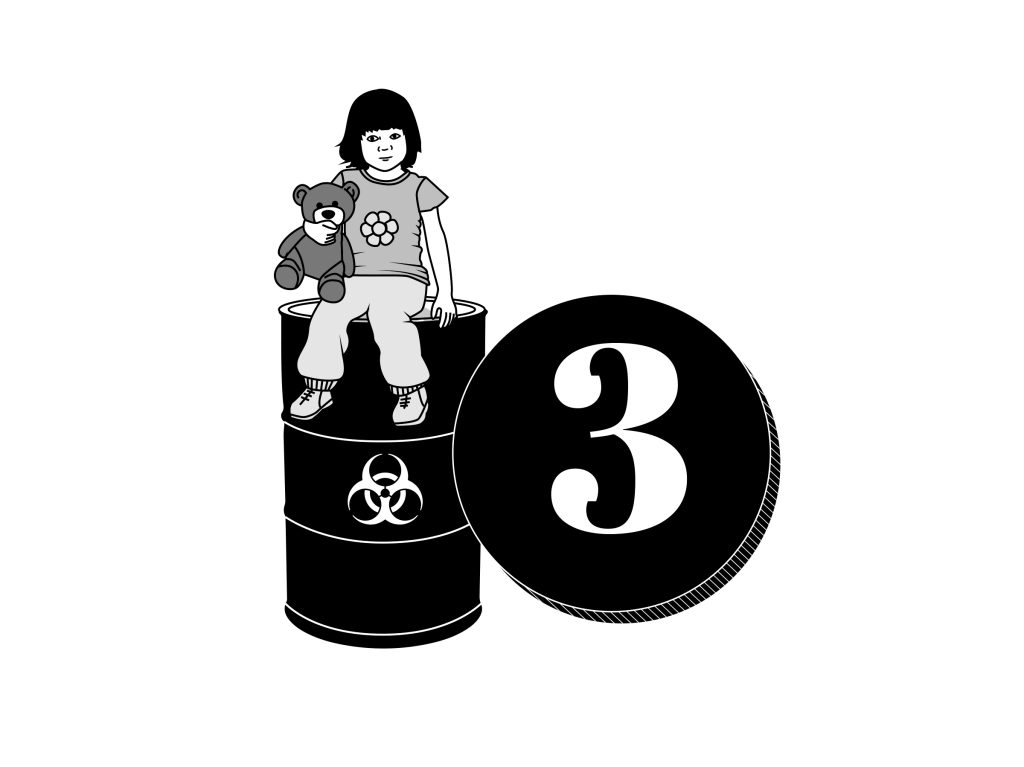
Toxic chemicals continue to go unregulated in the United States
The United States is “a global laggard in chemical regulation,” ProPublica reported in December 2022, a result of chemical industry influence and acquiescence by the Environmental Protection Agency (EPA) over a period of decades, according to reporters Neil Bedi, Sharon Lerner and Kathleen McGrory. A headline example: asbestos, one of the most widely-recognized toxic substances, is still legal in the US, more than 30 years after the EPA tried to have it banned.
“Through interviews with environmental experts and analysis of a half century’s worth of legislation, lawsuits, EPA documents, oral histories, chemical databases, and regulatory records, ProPublica uncovered the longstanding institutional failure to protect Americans from toxic chemicals,” Project Censored reported. ProPublica identified five main reasons for failure:
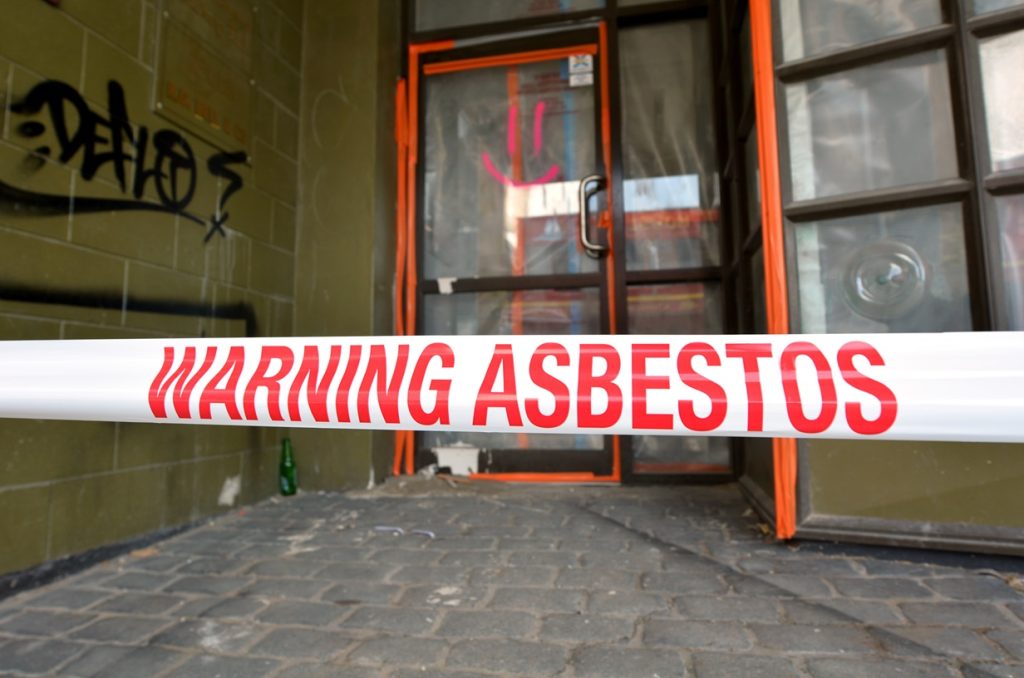
One: The chemical industry helped write the 1976 Toxic Substances Control Act (TSCA). A top EPA official “joked the law was ‘written by industry’ and should have been named after the DuPont executive who went over the text line by line,” ProPublica reported. The law “allowed more than 60,000 chemicals to stay on the market without a review of their health risks” and required the EPA to always choose the “least burdensome” regulations. “These two words would doom American chemical regulation for decades.”
Two: Following early failures, the EPA lost its resolve. In 1989, after 10 years of work, the EPA was banning asbestos. But companies that used asbestos sued and won in 1991, based on a court ruling they’d failed to prove it was the “least burdensome” option. However, “the judge did provide a road map for future bans, which would require the agency to do an analysis of other regulatory options … to prove they wouldn’t be adequate,” but rather than follow through, the EPA simply gave up.
Three: Chemicals are considered innocent until proven guilty. For decades, the U.S. and EU used a “risk-based” approach to regulation, requiring the government to prove a chemical poses unreasonable health risks before restricting it—which can take years. In 2007, the EU switched to a “hazard-based” approach, putting the burden on companies when there’s evidence of significant harm. As a result, ProPublica explained, “the EU has successfully banned or restricted more than a thousand chemicals.” A similar approach was proposed in the U.S in 2005 by New Jersey Sen. Frank Lautenberg, but it was soundly defeated.
Four: The EPA mostly regulates chemicals one by one. In 2016, a new law amended the TSCA to cut the “least burdensome” language, and created a schedule “where a small list of high-priority chemicals would be reviewed every few years; in 2016, the first 10 were selected, including asbestos,” ProPublica reported. “The EPA would then have about three years to assess the chemicals and another two years to finalize regulations on them.” But six years later, “the agency is behind on all such rules. So far, it has only proposed one ban, on asbestos, and the agency told ProPublica it would still be almost a year before that is finalized.” Industry fights the process at every step. “Meanwhile, the EU has authored a new plan to regulate chemicals even faster by targeting large groups of dangerous substances,” which “would lead to bans of another 5,000 chemicals by 2030.”
Five: The EPA employs industry-friendly scientists as regulators. “The EPA has a long history of hiring scientists and top officials from the companies they are supposed to regulate, allowing industry to sway the agency’s science from the inside,” ProPublica wrote. A prime example is Todd Stedeford. “A lawyer and toxicologist, Stedeford has been hired by the EPA on three separate occasions,” ProPublica noted. “During his two most recent periods of employment at the agency—from 2011 to 2017 and from 2019 to 2021—he was hired by corporate employers who use or manufacture chemicals the EPA regulates.”
“A handful of corporate outlets have reported on the EPA’s slowness to regulate certain toxic chemicals,” Project Censored noted, citing stories in the Washington Post and the New York Times. “However, none have highlighted the systemic failures wrought by the EPA and the chemical industry.”
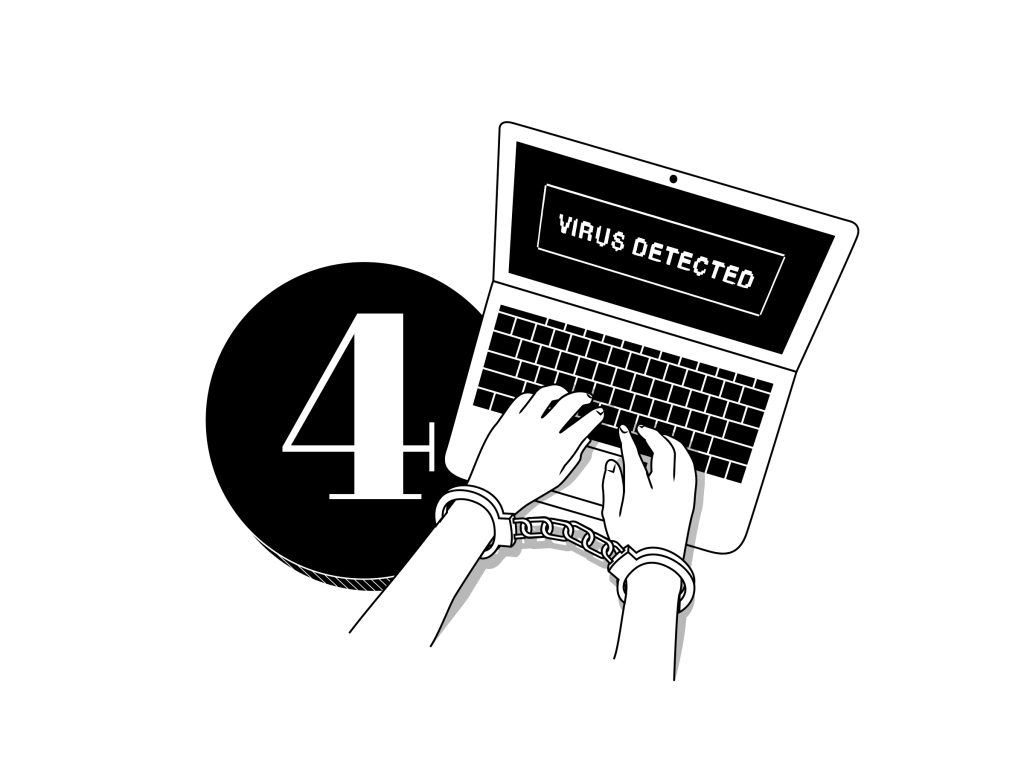
Stalkerware could be used to incriminate people violating abortion bans
Stalkerware—consisting of up to 200 surveillance apps and services that provide secret access to people’s phones for a monthly fee—“could become a significant legal threat to people seeking abortions, according to a pair of articles published in the wake of the US Supreme Court’s decision to overturn the constitutional right to abortion,” Project Censored reports.
“Abortion medication is safe. But now that Roe is overturned, your data isn’t,” Rae Hodge wrote for the tech news site CNET just two days after the Dobbs decision. “Already, the digital trails of abortion seekers can become criminal evidence against them in some states where abortion[s] were previously prosecuted. And the legal dangers may extend to abortion seekers in even more states.” The next month, writing for Slate, University of Virginia law professor Danielle Keats Citron warned that “surveillance accomplished by individual privacy invaders will be a gold mine for prosecutors targeting both medical workers and pregnant people seeking abortions.”
Invaders only need a few minutes to access phones and passwords. “Once installed, cyberstalking apps silently record and upload phones’ activities to their servers,” Citron explained. “They enable privacy invaders to see our photos, videos, texts, calls, voice mails, searches, social media activities, locations—nothing is out of reach. From anywhere, individuals can activate a phone’s mic to listen to conversations within 15 feet of the phone,” even “conversations that pregnant people have with their health care providers—nurses, doctors, and insurance company employees,” she warned. As a result, Hodge cautioned, “Those who aid abortion seekers could be charged as accomplices in some cases,” under some state laws.
It’s not just abortion, she explained, “Your phone’s data, your social media accounts, your browsing and geolocation history, and your ISP’s detailed records of your internet activity may all be used as evidence if you face state criminal or civil charges for a miscarriage.”
“Often marketed as a tool to monitor children’s online safety or as device trackers, stalkerware is technically illegal to sell for the purpose of monitoring adults,” Project Censored noted, but that’s hardly a deterrent. “Stalkerware and other forms of electronic surveillance have been closely associated with domestic violence and sexual assault, according to the National Network to End Domestic Violence,” Citron noted.
In addition, Hodge explained, “third-party data brokers sell sensitive geolocation data—culled through a vast web of personal tracking tech found in apps, browsers, and devices—to law enforcement without oversight.” And “abortion bounty hunter” provisions adopted by states like Texas and Oklahoma, add a financial incentive. “Given the inexpensive cost of readily available stores of personal data and how easily they can be de-anonymized, savvy informants could use the information to identify abortion seekers and turn a profit,” she noted.

“The law’s response to intimate privacy violations is inadequate, lacking a clear conception of what intimate privacy is, why its violation is wrongful, and how it inflicts serious harm upon individuals, groups, and society,” Citron explained. “Until federal regulations and legislation establish a set of digital privacy laws, abortion seekers are caught in the position of having to create their own patchwork of digital defenses, from often complicated and expensive privacy tools,” Hodge warned. While the bipartisan American Data Privacy and Protection Act is still “slowly inching through Congress” it “is widely thought toothless,” she wrote.
The Joe Biden administration has proposed a new rule protecting “certain health data from being used to prosecute both clinicians and patients,” STAT reported in May 2023, but the current draft only applies “in states where abortion is legal.”
“Corporate news outlets have paid some attention to the use of digital data in abortion-related prosecutions,” Project Censored reports. While there have been stories about post-Roe digital privacy, “none have focused specifically on how stalkerware could potentially be used in criminal investigations of suspected abortions.”

Certified rainforest carbon offsets mostly “worthless”
“The forest carbon offsets approved by the world’s leading certifier and used by Disney, Shell, Gucci, and other big corporations are largely worthless and could make global heating worse, according to a new investigation,” the Guardian reported on Jan. 23, as part of a joint nine month reporting project with SourceMaterial, and Die Zeit. “The analysis raises questions over the credits bought by a number of internationally renowned companies—some of them have labeled their products ‘carbon neutral,’ or have told their consumers they can fly, buy new clothes or eat certain foods without making the climate crisis worse.”
“About 90 percent of rainforest carbon offsets certified by Verra, the world’s largest offset certifier, do not reflect real reductions in emissions,” Project Censored summed up. Verra “has issued more than one billion metric tons worth of carbon offsets, certifies three-fourths of all voluntary carbon offsets.” While “Verra claimed to have certified 94.9 million credits” the actual benefits “amounted to a much more modest 5.5 million credits.” This was based on an analysis of “the only three scientific studies to use robust, scientifically sound methods to assess the impact of carbon offsets on deforestation,” Project Censored explained. “The journalists also consulted with indigenous communities, industry insiders and scientists.”
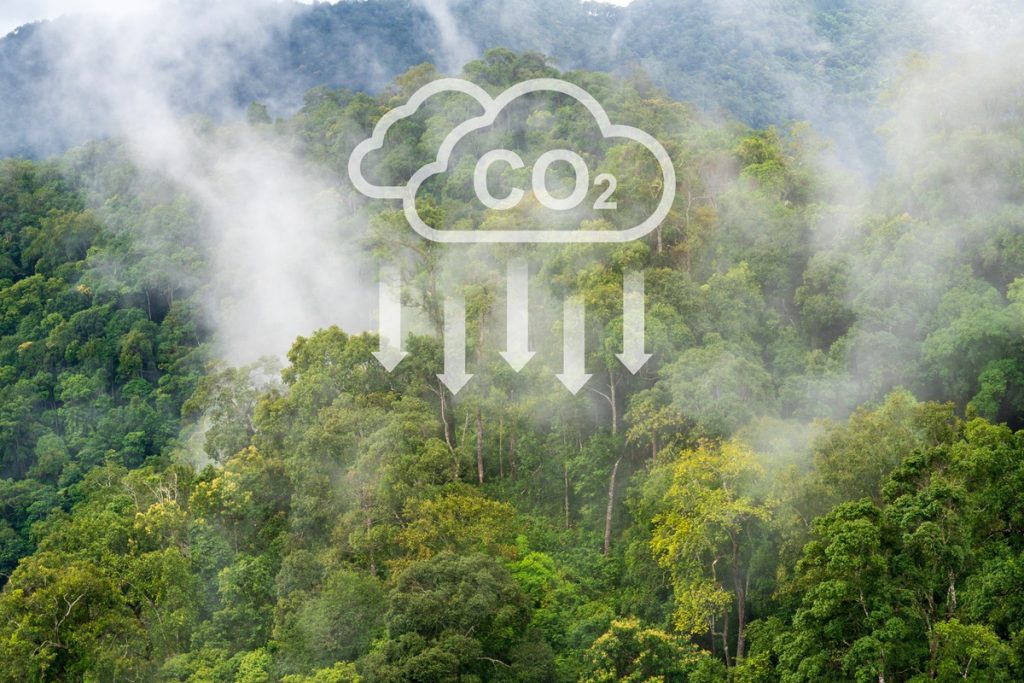
“The studies used different methods and time periods, looked at different ranges of projects, and the researchers said no modeling approach is ever perfect,” the Guardian wrote. “However, the data showed broad agreement on the lack of effectiveness of the projects compared with the Verra-approved predictions.”
Specifically, “The investigation of 29 Verra rainforest offset projects found that 21 had no climate benefit, seven had significantly less climate benefit than claimed (by margins of 52 to 98 percent less benefit than claimed), while one project yielded 80 percent more climate benefit than claimed. Overall, the study concluded that 94 percent of the credits approved by these projects were ‘worthless’ and never should have been approved.”
“Another study conducted by a team of scientists at the University of Cambridge found that in 32 of the 40 forest offset projects investigated, the claims concerning forest protection and emission reductions were overstated by an average of 400 percent,” Project Censored reported. “Despite claims that these 32 projects together protected an area of rainforest the size of Italy, they only protected an area the size of Venice.”
While Verra criticized the studies’ methods and conclusions, an outside expert, Oxford ecoscience professor Yadvinder Singh Malhi, had two PhD students check for errors, and they found none. “I wish it were otherwise, but this report is pretty compelling,” he told the Guardian.
“Rainforest protection credits are the most common type on the market at the moment. And it’s exploding, so these findings really matter,” said Barbara Haya, director of the Berkeley Carbon Trading Project, who’s researched carbon credits for 20 years. “But these problems are not just limited to this credit type. These problems exist with nearly every kind of credit,” she told the Guardian. “We need an alternative process. The offset market is broken.”
“There is simply nobody in the market who has a genuine interest to say when something goes wrong,” Lambert Schneider, a researcher at the Öko-Institut in Berlin told SourceMaterial.
“The investigations by the Guardian, Die Zeit, and SourceMaterial appear to have made a difference. In March 2023, Verra announced that it would phase out its flawed rainforest offset program by mid-2025,” Project Censored reported. But they could only find one brief mention of the joint investigation in major U.S. newspapers, a Chicago Tribune op-ed.

Unions won more than 70 percent of their elections in 2022, and their victories are being driven by workers of color
Unions won more than 70 percent of their certification elections in 2022, according to reporting by NPR and The Conversation, and workers of color were responsible for 100 percent of union growth, according to an analysis by the Economic Policy Institute reported by Payday Report and the New Republic. Also, 2,510 petitions for union representation were filed with the National Labor Relations Board (NLRB) in fiscal year 2022 (Oct. 1, 2021-Sept. 30, 2022), up 53 percent from FY 2021; and 1,249 certification elections were held, with 72 percent voting to certify a union as their collective bargaining agent. “The entire increase in unionization in 2022 was among workers of color—workers of color saw an increase of 231,000, while white workers saw a decrease of 31,000,” EPI wrote in a Feb. 2023 press release.
EPI also noted that “Survey data show that nearly half of nonunion workers (48 percent) would vote to unionize their workplace if they could. That means that more than 60 million workers wanted to join a union, but couldn’t. The Protecting the Right to Organize (PRO) Act and the Public Service Freedom to Negotiate Act provide crucial reforms that would strengthen workers’ rights to form a union and engage in collective bargaining.” It passed the House in 2020 and 2021 but died in the Senate, where it needed 60 votes to pass because of the filibuster. “Seventy-one percent of Americans now support unions according to Gallup—a level of support not seen since 1965,” Project Censored noted. “Dismantling existing barriers to union organizing and collective bargaining is crucial to generating a more prosperous, equitable economy,” EPI concluded.
More than a quarter of 2022 union elections, 354, were held at Starbucks, Marick Masters explained in his January 2023 article for The Conversation. “Workers at Starbucks prevailed in four out of every five elections. Workers at Chipotle, Trader Joe’s and Apple unionized for the first time, while workers at Microsoft and Wells Fargo also had wins,” Project Censored reported.
Union activity spikes during times of social unrest, Masters reported. Unionization rose from 7.6 to 19.2 percent from 1934 to 1939, during the Great Depression, and from 20 to 27 percent between 1941 and 1945, during World War II. “Masters described the current wave of union activity as driven by record levels of economic inequality and continued mobilization of workers in ‘essential industries,’ such as healthcare, food and public safety, who were thrust into harm’s way during the global pandemic,” Project Censored noted.
“Whereas Republican and Democratic politicians often separate concerns over working conditions and pay from issues of identity, these data demonstrate how identity and workers’ rights are closely connected,” Project Censored added. “Unionization and labor struggles are direct mechanisms to better accomplish racial and social equality; the ability for people to afford to live happy and dignified lives is inherently tied to their ability to enjoy fundamental social and civil rights within those lives, too,” Prem Thakker noted at the New Republic.
Despite these gains, “the power of organized labor is nowhere close to what it once was,” Project Censored wrote. “As Masters pointed out, more than a third of workers were unionized in the 1950s, whereas only a tenth were in 2021. Before the 1980s, there were typically more than five thousand union elections in any given year, and as recently as 1980, there were two hundred major work stoppages [over 1,000 workers],” compared to just 20 in 2022, which was still 25 percent above the average over the past 16 years.
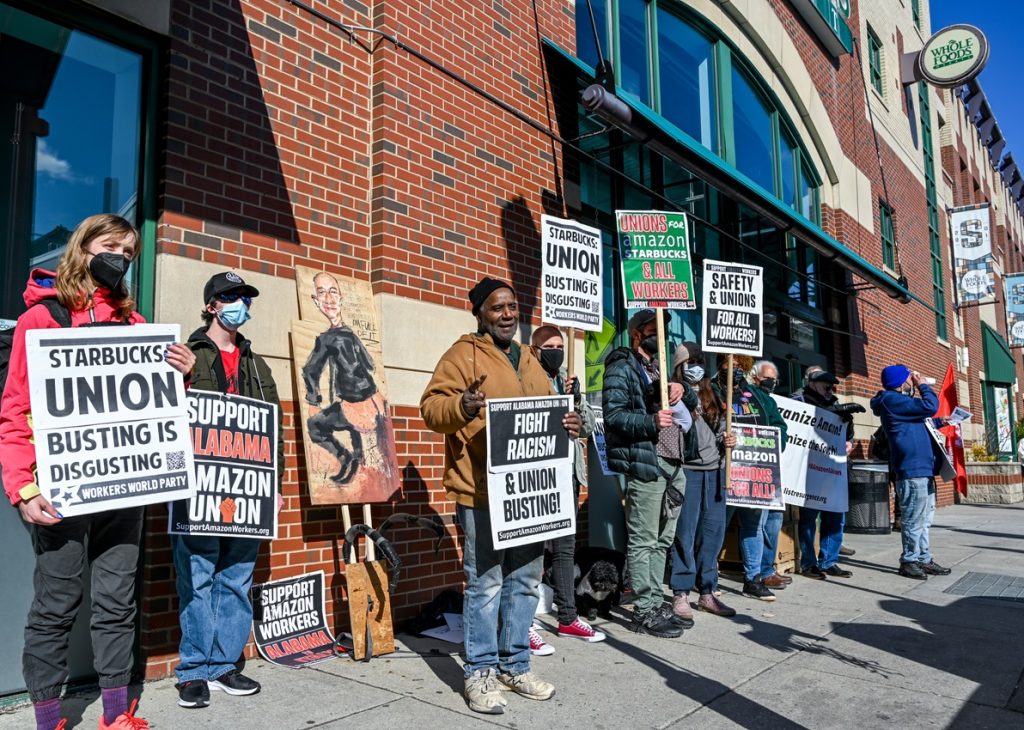
“Corporate media coverage of the labor resurgence of 2022 was highly selective and, in some ways, misleading,” Project Censored reported. There’ve been hundreds of articles on union organizing at Starbucks and Amazon, and “Yahoo republished Masters’ The Conversation article about union success in elections, and Vox, Bloomberg Law, and the Washington Post all remarked on organized labor’s recent string of certification vote victories,” they noted. “Yet corporate coverage of current labor organizing often fails to address the outsized role played by workers of color in union growth.” Nor has it placed recent union successes in the historical context of prolonged decline, largely due to private employers’ heavy-handed efforts to undermine organizing campaigns and labor laws that strongly favor employers.

Fossil fuel investors sue governments to block climate regulations
“Litigation terrorism.” That’s what Nobel Prize-winning economist Joseph Stiglitz called the practice of fossil fuel companies and investors suing governments in secretive private tribunals to thwart climate change policies. Litigants claim climate change laws undermine their profits, and thus they must be compensated under what’s known as “investor-state dispute settlement” [ISDS] legal actions, Rishika Pardikar reported for The Lever in June 2022, following a paper in Science by lead author Kyla Tienhaara the month before. It found that “Global action on climate change could generate upward of $340 billion in legal claims from oil and gas investors,” which, “is more than the total level of public climate finance globally in 2020 ($321 billion).”
A good portion threatens the global south. “The five countries with the greatest potential losses from ISDS are Mozambique ($7–31 billion), Guyana ($5–21 billion), Venezuela ($3–21 billion), Russia ($2–16 billion), and the United Kingdom ($3–14 billion),” Tienhaara reported. What’s more, “If countries decide to also cancel oil and gas projects that are currently under development, this could introduce substantial additional financial losses from ISDS claims.”
“Such [litigation] moves could have a chilling effect on countries’ ability to take climate action because of the fear and uncertainty they cause,” Pardikar noted. “New Zealand, for example, recently said that it could not join the Beyond Oil and Gas Alliance, an international consortium of governments working to phase out fossil fuels, because doing so ‘would have run afoul of investor-state settlements,’” Lois Parshley reported for Grist in January 2023.
Project Censored also cited Lea Di Salvatore’s December 2021 report that fossil fuel “investors succeeded in 72 percent of all cases,” winning an average over $600 million, “almost five times the amount awarded in non-fossil fuel cases.” In addition, secrecy is the rule: “54 percent of the concluded fossil fuel cases are confidential—while their existence is known, no case-related documents, such as awards or decisions, have been made public.”
Although the tribunals may sound like courts, they aren’t. “Because ISDS systems are written into thousands of different treaties, each with different wording, there’s also no system of precedence,” Parshley wrote, after noting the practice of ‘double batting,’ in which one individual may act as arbitrator, legal counsel, expert witness, and tribunal secretary, either sequentially or even concurrently. Most come from “an elite group of approximately 50 arbitrators who are regularly appointed” to most cases, researcher Silvia Steininger told Pardikar. Conflicts of interest “are viewed as commonplace in international investment arbitration and considered an inherent part of the system,” the Law Review article Parshley references said. What’s more, “Just because arbitrators decide something in one case doesn’t mean that logic has to be applied to another. Proceedings can be kept confidential, and there is no way to appeal a tribunal’s decision,” Parshley noted.
Tienhaara’s paper ended with a section “An Abolitionist Approach,” where she warned, “Reformist approaches would be time-consuming and likely ineffectual, based on the experience of previous efforts.” Abolitionist examples include “Terminating all bilateral investment treaties” in order to “prevent existing leaseholders from accessing ISDS,” as South Africa and others have done “without any resulting reductions in foreign investment.” Negotiating the “removal of ISDS clauses from trade agreements, as the United States did with Canada in the US-Mexico-Canada Agreement,” is also possible. “Another option is for states to withdraw consent to ISDS in cases involving fossil fuel investments, emulating the approach taken by Singapore and others to remove the threat of ISDS claims from the tobacco industry.”
But abolitionists face two problems: “sunset clauses” that extend treaty protections “for 10 to 20 years for investments commenced prior to termination” (though they can be nullified), and resistance “from states with powerful fossil fuel lobbies.” Parshley noted that the Energy Charter Treaty, “ratified by over 50 primarily European countries,” is the largest international agreement protecting fossil fuel companies. After six countries announced their withdrawal and a modification effort failed, “the European Parliament called for a coordinated European Union departure from the treaty altogether,” but they still face sunset clause threats.
While the Independent also reported on ISDS lawsuits “it only briefly touched on the concern that these lawsuits could prevent climate action,” Project Censored noted. “Beyond this handful of reports, the topic has received little coverage from major news outlets.”

Proximity to oil and gas extraction sites linked to maternal health risks and childhood leukemia
“Two epidemiological studies, from 2021 and 2022, provide new evidence that living near oil and gas extraction sites is hazardous to human health,” Project Censored reports, “especially for pregnant mothers and children, as reported by Nick Cunningham for DeSmog and Tom Perkins for the Guardian.”
Based on 1996–2009 data for more than 2.8 million pregnant women in Texas, researchers from Oregon State University (OSU) found that “for those pregnant women within one kilometer of drilling there’s about a 5 percent increase in odds of gestational hypertension, and 26 percent increased odds of eclampsia,” researcher Mary Willis told DeSmog. “So, it’s this really close range where we are seeing a potential impact right on women’s health.” Eclampsia is a rare but serious condition where high blood pressure results in seizures during pregnancy.
“Notably, the data in the OSU study predate the widespread development of ‘fracking,’ or hydraulic fracturing, the process of extracting gas and oil from shale beds by injecting fluids at high pressure,” Project Censored noted, pointing to its years of previous coverage.
The second study, from Yale, did study fracking. It found that “Young children living near” fracking wells at birth [less than two kilometers (approximately 1.2 miles)] are up to three times more likely to later develop leukemia,” according to an August 2022 Guardian story. “Hundreds of chemicals linked to cancer and other health issues may be used in the [fracking] process, including heavy metals, polycyclic aromatic hydrocarbons, volatile organic compounds, benzene and radioactive material,” they explained. The study, based on 2009-2017 data from Pennsylvania, compared 405 children aged 2 to 7 diagnosed with acute lymphoblastic leukemia with an additional 2,080 children, matched on birth year, who didn’t have leukemia.
The findings aligned with others, as DeSmog discussed. “One consistent takeaway from so many health studies related to fracking is that proximity is key,” they reported. “The allowable setback in Pennsylvania, where our study was conducted, is 500 feet,” Yale researcher Cassandra Clark told them. “Our findings … in conjunction with evidence from numerous other studies, suggest that existing setback distances are insufficiently protective of children’s health.”
State and local governments have tried to create health buffer zones, but “The oil industry has consistently fought hard to block setback distance requirements,” DeSmog reported. For example, “In 2018, the oil industry spent upwards of $40 million to defeat a Colorado ballot measure that would have imposed 2,500-foot setback requirements for drillers.” Regulations are so weak that “In Texas, drilling sites can be as close as 45 meters from residences,” Willis told them.
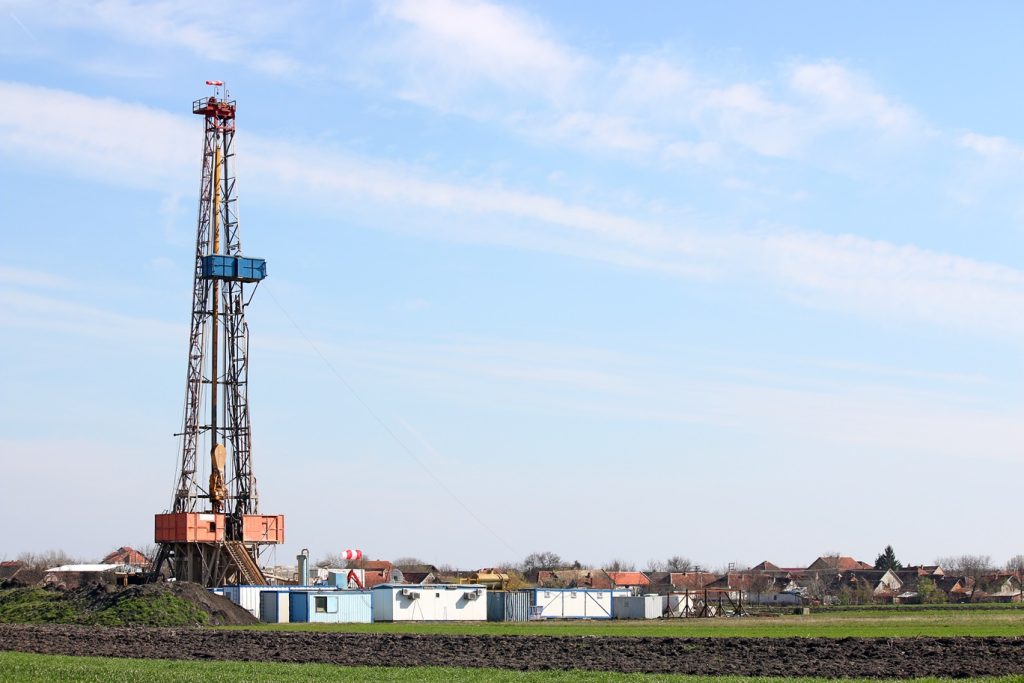
“Last year, California Governor Gavin Newsom announced new proposed rules that would require 3,200-foot setbacks on new oil and gas drilling, which would be the strongest in the nation and aligns with the distance where Willis’s studies find the most serious risks for pregnancies,” DeSmog reported. “But those rules would not affect existing wells.”
No major U.S. newspapers appear to have covered either the OSU or the Yale study at the time of Project Censored’s publication, although “Smithsonian magazine, The Hill, and WHYY, an NPR affiliate serving the Philadelphia region, covered the fracking study.”

Deadly decade for environmental activists
At least 1,733 environmental activists were murdered between 2012 and 2021—nearly one every two days across 10 years—according to the Global Witness study, Decade of Defiance; “killed by hitmen, organized crime groups and their own governments,” Patrick Greenfield reported for the Guardian, “with Brazil, Colombia, the Philippines, Mexico and Honduras the deadliest countries,” with half the attacks taking place in the first three countries, each reporting around 300 killings.
“This has been going on for decades,” scientist, activist, and author Vandana Shiva wrote in a foreword to the report.
“The report shows Brazil has been the deadliest country for environmental defenders with 342 lethal attacks reported since 2012 with over 85 percent of killings within the Brazilian Amazon,” Stuti Mishra reported for the Independent. “Mexico and Honduras witnessed over 100 killings while Guatemala and India saw 80 and 79 respectively, remaining one of the most dangerous countries. The report also reports 12 mass killings, including three in India and four in Mexico.”
“The killing of environmental activists has been concentrated in the Global South,” and “Indigenous land defenders are disproportionately impacted,” Project Censored warned. “The Guardian reported that 39 percent of those killed were from Indigenous communities, despite that group constituting only 5 percent of the global population.”
“This is about land inequality, in that defenders are fighting for their land, and in this increasing race to get more land to acquire and exploit resources, the victims are indigenous communities, local communities, whose voices are being suppressed,” the BBC summed up.
“Threats to environmental activists are not limited to killing,” Project Censored noted. “Environmental activists also face beatings, arbitrary arrests and detention, strategic lawsuits against public participation (SLAPPs) brought by companies, sexual violence, and surveillance. A separate April 2022 report from the Business and Human Rights Resource Centre, as reported by Grist, documented more than 3,800 attacks on human rights defenders—including not only killings and death threats but also beatings, arbitrary arrests and detention, and lawsuits—between January 2015 and March 2021.”
But “campaigners are hopeful that progress is being made,” the BBC reported, citing the sentencing of a former energy executive to 22 years in prison in Honduras for the murder of world-renowned activist Berta Cáceres in 2016, as well as promising international agreements. The Escazú Agreement, the first environmental and human rights treaty for Latin America and the Caribbean “commits countries to prevent and investigate attacks on environmental defenders,” and went into force in 2021. Mexico has ratified it, but “others including Brazil and Colombia have not” so far, the BBC said. There are also plans by the European Union to pass laws making companies responsible for human rights abuses in their supply chains.
“These are game-changing decisions that could make a real positive impact for environmental defenders,” Shruti Suresh told the BBC. “We should be optimistic. But it is going to be a difficult and challenging road ahead.”
There’s been scattered coverage of Global Witness’ report. A September 2022 New York Times article reporting how Mexico was deemed the deadliest country for environmental activists, a short piece the next month in the New York Times’ climate newsletter “Climate Forward’’ about why Latin America is so dangerous for environmental activists, and Feb. 26, 2023, a Los Angeles Times op-ed about attacks on Mexican Indigenous communities fighting climate change all referenced Global Witness’ findings, but “Otherwise, the corporate media have largely ignored the Global Witness study about the deadly wave of assaults on environmentalists during the past decade,” Project Censored noted, adding that it had previously covered the 2014 edition of Global Witness’s report “which was also significantly under-reported by establishment news outlets in the United States.”
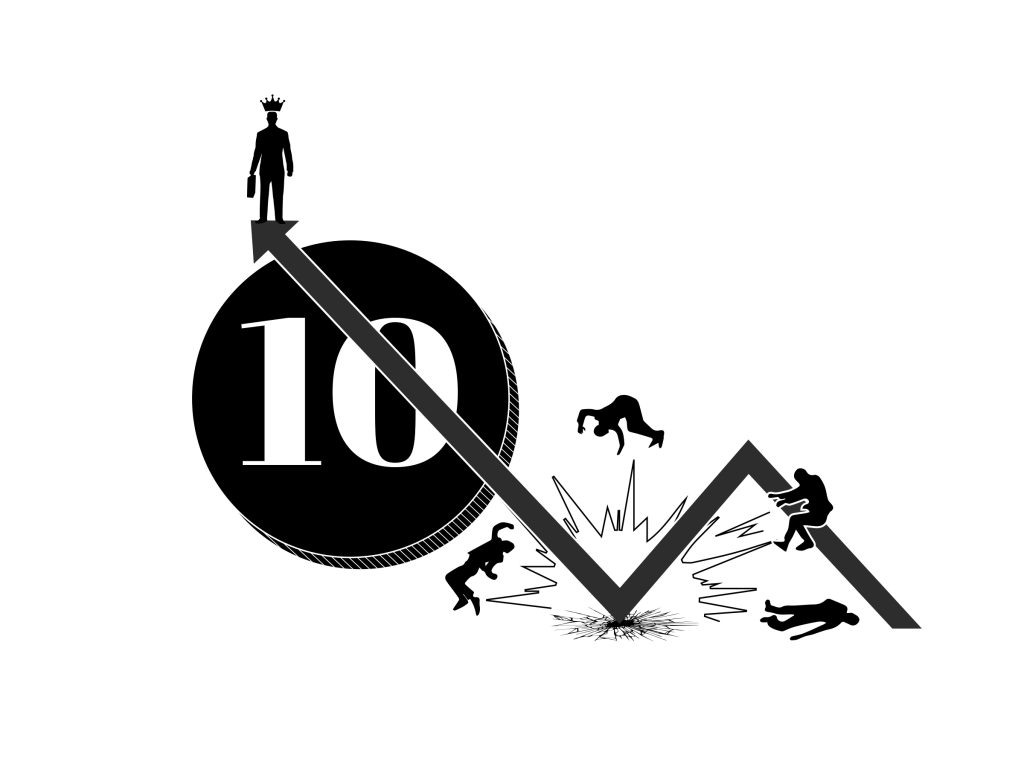
Corporate profits hit record high as earnings for top 0.1 percent and Wall Street bonuses skyrocket
“Corporate profits in the U.S. surged to an all-time record of $2 trillion in the second quarter of 2022 as companies continued jacking up prices, pushing inflation to a 40-year high to the detriment of workers and consumers,” Jake Johnson reported for Common Dreams in August 2022. “Astronomical corporate profits confirm what corporate executives have been telling us on earning calls over and over again: They’re making a lot of money by charging people more, and they don’t plan on bringing prices down anytime soon,” the Groundwork Collaborative’s chief economist, Rakeen Mabud, said.
This followed Johnson’s reporting in March that the average bonus for Wall Street employees rose an astounding 1,743 percent between 1985 and 2021, according to an analysis by Inequality.org of New York State Comptroller data. Then, in December 2022, he reported that “earnings inequality in the United States has risen dramatically over the past four decades and continues to accelerate, with the top 0.1 percent seeing wage growth of 465 percent between 1979 and 2021 while the bottom 90 percent experienced just 29 percent growth during that same period,” according to research by the Economic Policy Institute (EPI). As a result, the average incomes of the top 0.1 percent rose from 20 times that of the bottom 90 percent in 1979 to more than 90 times as much in 2021.
“The fossil fuel industry has enjoyed especially lavish profits,” Project Censored notes, citing Jessica Corbett’s July 2022 reporting for Common Dreams that the eight largest oil companies’ profits spiked a whopping 235 percent from the second quarter of 2021 to the second quarter of 2022, for a combined $52 billion profit, according to an analysis by Accountable.US. “Make no mistake; these profits mark a large transfer of wealth from working- and middle-class people to wealthy oil executives and shareholders,” Jordan Schreiber of Accountable.US told Corbett. “While many consumers were feeling the heavy burden of a life necessity suddenly doubling in price, oil executives were keeping prices high to maximize their profits.”
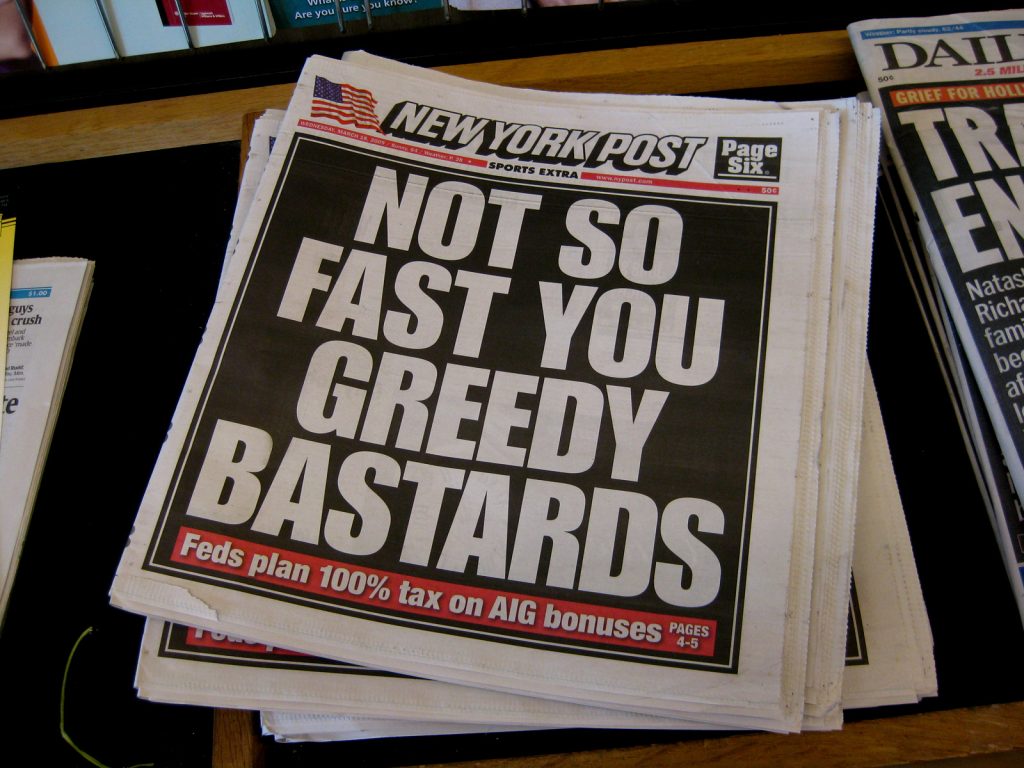
“ExxonMobil profited $17.85 billion; Chevron, $11.62 billion; and Shell, $11.47 billion,” Project Censored notes. “Notably, in 2021-2022, the oil and gas industry spent more than $200 million lobbying Congress to oppose climate action.”
Coverage of all this was scant. “The establishment media have reported intermittently on record corporate profits, but this coverage has tended to downplay corporate use of inflation as a pretext for hiking prices,” Project Censored sums up, citing examples from Bloomberg, ABC News and New York Times where the role of greedflation was debated.” The Times quoted experts from EPI and Groundwork Collaborative but refused to draw any firm conclusions,” they note.
In addition, “The EPI study on the accelerating incomes of the ultrarich was virtually ignored” while the massive Wall Street bonuses got some coverage, they report: “Reuters ran a story on it, as did the New York Post. CNN Business noted that ‘high bonuses are also good news for Gotham’s tax coffers.’”
Copyright 2023 Random Lengths News

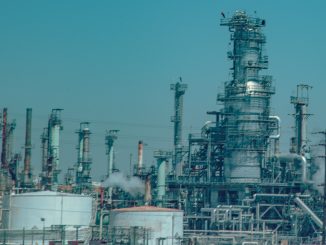


Be the first to comment